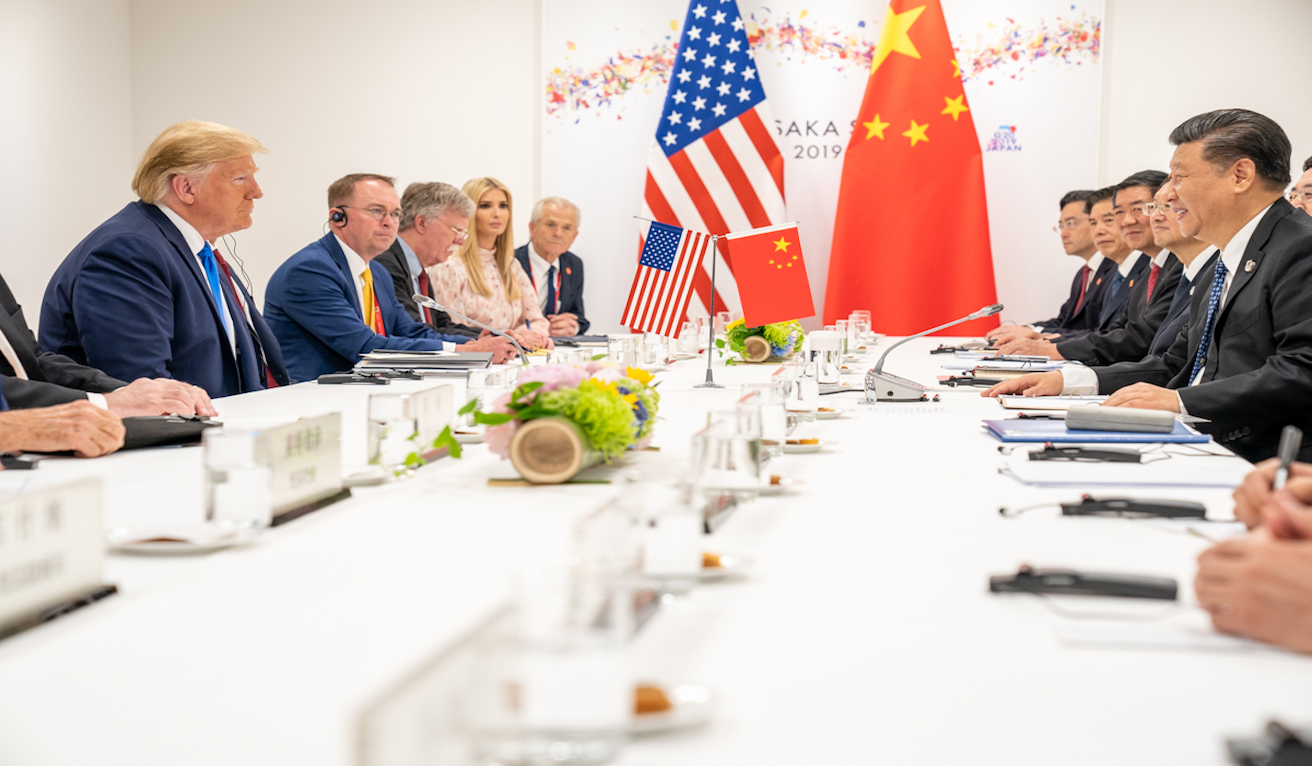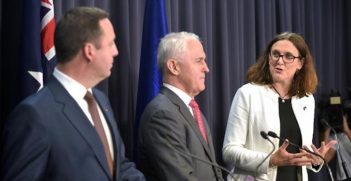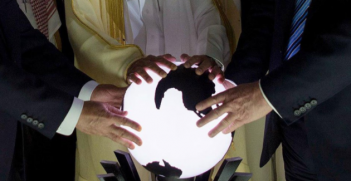Trade Wars: Much Ado About Nothing?

Under President Trump the US has declared war on the international trading system. While the US-China trade war commands most attention, punitive tariffs have been applied unilaterally by the US to exports from Japan, South Korea, Germany, Canada and Mexico, among others.
The US-China trade war has involved the US applying 10-25 percent tariffs on Chinese imports into the US, affecting an estimated US $300 billions of goods and the Chinese retaliating with similar tariff increases on goods valued at about half of that amount.
More recently, Trump has again threatened via a tweet to impose another 10 percent on an additional range of goods, including smart-phones and a range of other consumer products which had not, until then, been caught in the tit-for-tat tariff dispute. Possibly concerned by the potential unpopularity of the measure before Christmas, Trump has said the additional tariffs will not be levied until later in December this year. The Chinese have threatened to retaliate in kind to any further tariff imposts against their exports.
The additional tariffs were threatened after the breakup of the last round of negotiations held in Shanghai in July 2019 with no apparent progress. Negotiations have been through four rounds over nearly eighteen months with little sign of progress. Both sides accuse each other of insincerity.
China is not alone
Trump made the renegotiation of the North American Free Trade Agreement (NAFTA) a major election priority. He used unilateral tariff measures and threats against both Canada and Mexico to force a renegotiation of the agreement together with threats of US unilateral withdrawal. In September 2018, the US-Mexico-Canada Agreement (USMCA) was signed. NAFTA will remain in force until USMCA is ratified by each party to it.
Punitive unilateral tariffs have been applied against steel and aluminium exports from Japan, South Korea, Germany, Canada and Mexico. European and Japanese autos have been threatened as well.
Trump has also used the threat of tariffs for non-trade purposes. For example, he threatened tariff hikes against Mexico, after USMCA was agreed — if Mexico did not do more to restrict the flow of illegal immigrants across its southern border.
The use of trade measures for non-trade purposes was something China had rightly been criticised for doing, including by the Australian Government. Australia has been silent on Trump’s doing the same. As if the use of trade measures for non-trade purposes has now been legitimised, Japan has imposed trade restrictions against South Korea over their long-standing dispute over Korean “comfort women” for Japanese troops during Japan’s occupation of Korea.
Do tariffs matter?
Tariffs most certainly matter — they increase costs to both consumers and producers, distort resource allocation towards less efficient activities, cause trade diversion away from efficient producers and consequently reduce economic welfare.
The US-China trade war, despite involving the world’s two biggest economies, does not as yet appear to have had much impact either on their own economic performance nor on the global economy more generally.
It is, of course, far too early to be definitive. Nonetheless, many of the dire consequences that were feared so far have not occurred. Economic growth in both the US and China remains robust. US unemployment is at historic lows. Equity markets are at record highs, at least in the US.
US consumer spending is resilient and would offset short-term effects of tariffs. The massive US department store, Walmart, is reporting a strong sales outlook and the world’s largest container shipper, Maersk, has said it six-months profits were up on the corresponding period last year. Maersk, which accounts for around 18 percent of world container freight sent by sea, points to the diversion of trade to other markets as the reason for the trade war’s minimal impact on their business.
The trade war has, however, added to uncertainty and this effect might have the biggest impact on growth if firms start to hold off making investment decisions.
Curiously, while China is the main target for Trump’s tariffs, countries such as Singapore and South Korea have already been hurt. Both have seen exports and economic growth fall sharply over the past six months.
Meanwhile, beneficiaries of the US-China trade war, such as Vietnam and Bangladesh, have seen exports surge. Vietnam has started to attract the attention and ire of the Trump. Brazil is happily replacing the US as the major soya bean supplier to China.
All these consequences, both expected and unexpected, highlight what a blunt instrument a trade war using tariff hikes is in a world of deeply integrated production chains, highly mobile capital and many alternative sources of supply and markets in which to sell.
China is the main game and it is much more than trade
Trade however is not the main issue. Trump may naively believe that unilateral tariffs may lead to some relocation of US manufacturing back to the US itself or prevent more US manufacturers moving production offshore. The cumulative effect of such inefficient decisions will overtime act as a drag on the US economy.
Most likely the Trade War will be brought to an end by Trump in a face-saving package of concessions sometime before the next US Presidential election so that the negative economic effects do not themselves become part of the election.
A deeper and more fundamental contest is underway between the US and China. This goes to issues, such as technological leadership in telecommunications, artificial intelligence, cyber warfare, intellectual property protection and the structure of the Chinese dirigiste economic model itself — with its mix of state-owned enterprises and subsidies.
Huawei is totemic of the challenge the US has laid down to China over technology, but Huawei is not alone. Although Trump has again delayed the imposition of restrictions on US firms dealing with certain Chinese companies, indicating just how difficult it is for US firms to disengage from Chinese suppliers, it is expected that restrictions will eventually be applied. It is being suggested that nothing less than the disentangling of “US and China centric” supply chains is underway and will continue, irrespective of what happens on the trade front.
In October last year, Vice President Pence in a speech at the neo-conservative Hudson Institute made clear that at the top levels of the Trump Administration, a decision had been taken to challenge China on all fronts. This was now to become a concerted ideological struggle against China. This view was recently echoed by Coalition backbencher and Chair of the Parliamentary Joint Committee on Intelligence and Security, Andrew Hastie.
With last year’s blanket ban on Huawei and the Australian government’s refusal to join or associate itself with China’s Belt and Road Initiative, Australia has taken sides in this ideological and geopolitical contest between the US and China.
This has been done with minimal public discussion of the benefits and costs. In effect, Australia has sleep walked into perhaps the most important decision affecting its long-term security interests with hardly a murmur.
Trade War: much ado about nothing?
Raising trade barriers do matter but unless sustained for a long time, probably not as much as headlines would seem to suggest. Of greater concern is Trump’s attack on the rules-based multilateral trading system through unilateral tariff hikes, provoking tariff retaliation and failure to endorse new candidates for the World Trade Organisation’s (WTO) Appellate Body.
The US has surrendered its leadership of the rules-based multilateral trading system. It has begun to use tariffs to achieve political ends, and in doing clears the way for others to behave similarly.
Relatively small countries like Australia should be most concerned about this. The rules-based multilateral trading system which has served the international economy so well for decades is now seriously under threat. It served to restrain the powerful and provide the means for smaller participants to defend their interests.
Australia and other small open trading economies now face the prospect of a return to the pre-WTO world of managed trade. When the US and China finally reach a trade deal, as they must, it is likely to be damaging to Australia. China has considerable capacity to accommodate US demands, especially in areas such as agriculture and energy — namely coal and LNG. These concessions by China will likely divert some of its current demand for Australian products to US suppliers.
If the two biggest economies revert to managed trade, then others surely will as well. Trade outcomes may increasingly be determined by relative power, not relative efficiency. The world stands on the brink of the unravelling of the WTO commitments members have made to each other.
The systemic consequences of the trade war are definitely not “much ado about nothing.” Undermining the multilateral trading system carries potentially far more serious long-term risks than a hike in tariffs.
Beyond the bilateral trade issues, however, is the US’s agenda to “de-couple” from China in technology and investment and to disengage global supply chains. Bifurcating the international system will mean that everyone, including Australia, will live in a poorer, more dangerous world.
Dr Geoff Raby is the former Australian Ambassador to China and is currently the chairman, CEO and founder of Geoff Raby & Associates. He received his PhD in economics from Melbourne’s LaTrobe University.
This article is published under a Creative Commons Licence and may be republished with attribution.





